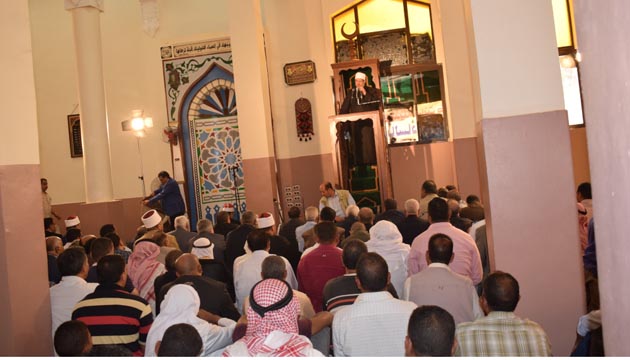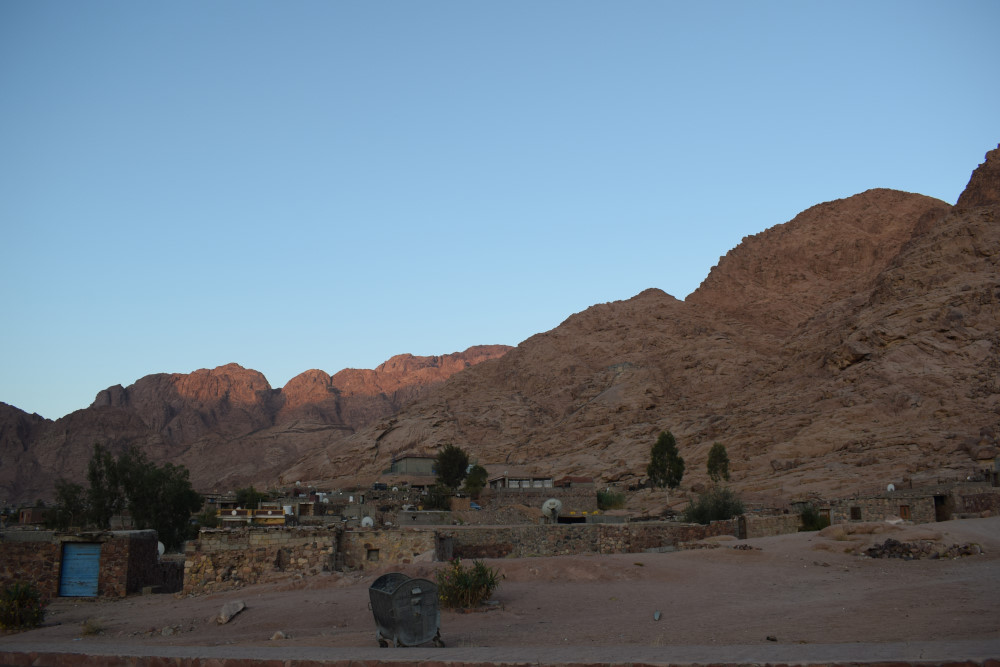Uzzal Hossan Khan , from Egyp .
South Sinai governorate organised the fifth St Catherine forum on religious tolerance, “Here We Pray Together,” on 10-12 October. Later on the same day, Gomaa participated with the other ministers in laying the foundation stone for El-Wadi El-Muqaddas Great Mosque.
Governor of South Sinai Khaled Fouda received the ministers of tourism, antiquities, culture, religious endowments, immigration, supply, local development, youth who attended the forum.
Minister of Antiquities Khaled El-Enany described Sinai as “a source of inspiration that has radiated across civilisations, both regionally and globally.

St Catherine’s Monastery combines Judaism, Christianity and Islam. This is what we could call the genius of Egypt and the reflection of a harmony between the followers of different religions,” he said.
St Catherine’s Monastery contains a distinguished basilica built in 530 CE by the Byzantine emperor Justinian on the site of an earlier chapel founded by St Helena, mother of the emperor Constantine the Great.
It is believed that Prophet Moses
received the Ten Commandments in the city, specifically on Mount Moses, also
known as Mount Sinai, at whose foot lies the monastery.
At a 2.285-meter elevation, the mountain is hiked for sport and religious
reasons. It is usually hiked at night in 1.5 to 4 hours so sunrise could be
seen illuminating the reddish peaks and valleys below the second highest mountain
in Egypt. If climbed in the winter, the mountain tops would be covered in snow.
The mountain is a relatively easy hike.
Other peaks in the mountainous St. Catherine are more challenging and way less
commercialized, such as Umm Shumar, which also prides itself in beautiful views
at the peak. The Red Mountain is a moderate hike with beautiful views on the
way to the top.
St. Catherine City is a natural reserve and a UNESCO World Heritage Area. It
boasts the Nubian ibex, rock hyraxes, migrating birds and hundreds of naturally
grown medicinal plants. Some tourists take days-long walks from St. Catherine
to Sharm el-Sheikh or el-Tur cities with Bedouin guides to see splendid rock
formations and small streams floating down boulders in the heart of the desert in
and after the rain season in places such as Wadi Esla and Wadi Te’la.
The monastery’s long existence and virtually intact collections of icons and manuscripts can be attributed to its naturally well-secured location, tucked away in the barren rocky landscape of South Sinai.
In 2002 the site was placed on the World Heritage List overseen by the UN cultural body UNESCO as a “mixed property, cultural and natural”, meaning that both the monastery and the area around it are protected.
Thirty-two ambassadors attended the forum, including the ambassadors of Denmark, Ireland, Greece, Finland, Switzerland, EU, Georgia, Colombia, Japan, Poland, Austria, Serbia, France, Belgium, Armenia, Malta, Morocco, Kazakhstan, Cameroon, Oman, Czech Republic and Tajikistan.
Fouda said the annual celebration witnessed an unprecedented international participation this year. He added that St Catherine has seen remarkable development in its infrastructure lately, as well as development in the tourism sector, especially religious tourism.
Endowments Minister Mohamed Mokhtar Gomaa delivered the Friday sermon at El-Wadi El-Moqaddas Mosque in South Sinai, while Christians held mass at Saint Catherine’s Monastery at the same time.
Minister of Tourism Rania Al-Mashat said the forum’s slogan “Here We Pray Together” aimed at building bridges between people, and that it was one of the key elements in the promotional programme of Egypt tourism, “People 2 People,” which invited the world to get to know the Egyptian people, and to fully live the Egyptian experience.

Minister of Culture Ines Abdel-Dayem also opened on Friday the rest house of the former president Mohamed Anwar El-Sadat’s in Wadi Al-Raha in Saint Catherine city after it was renovated by the South Sinai governorate in cooperation with the Ministry of Culture and adding a number of Sadat’s photos and belongings to it.